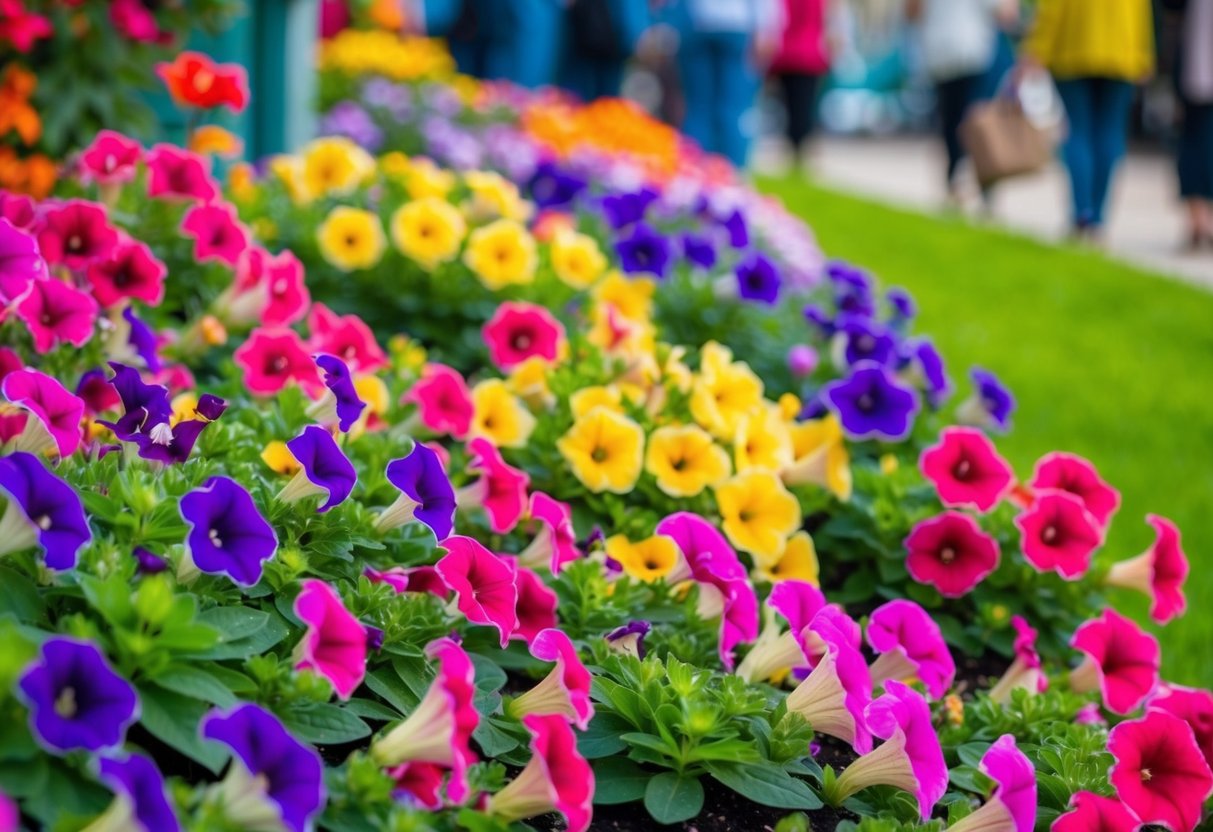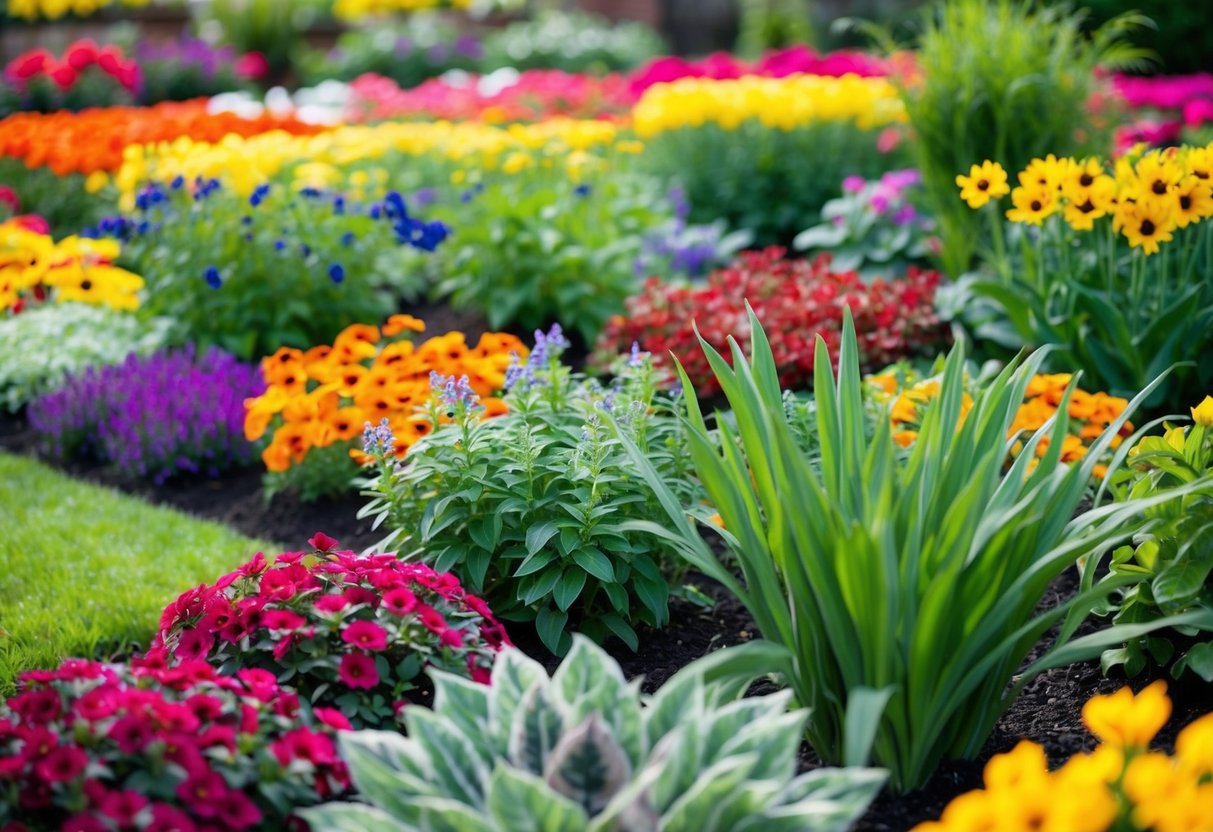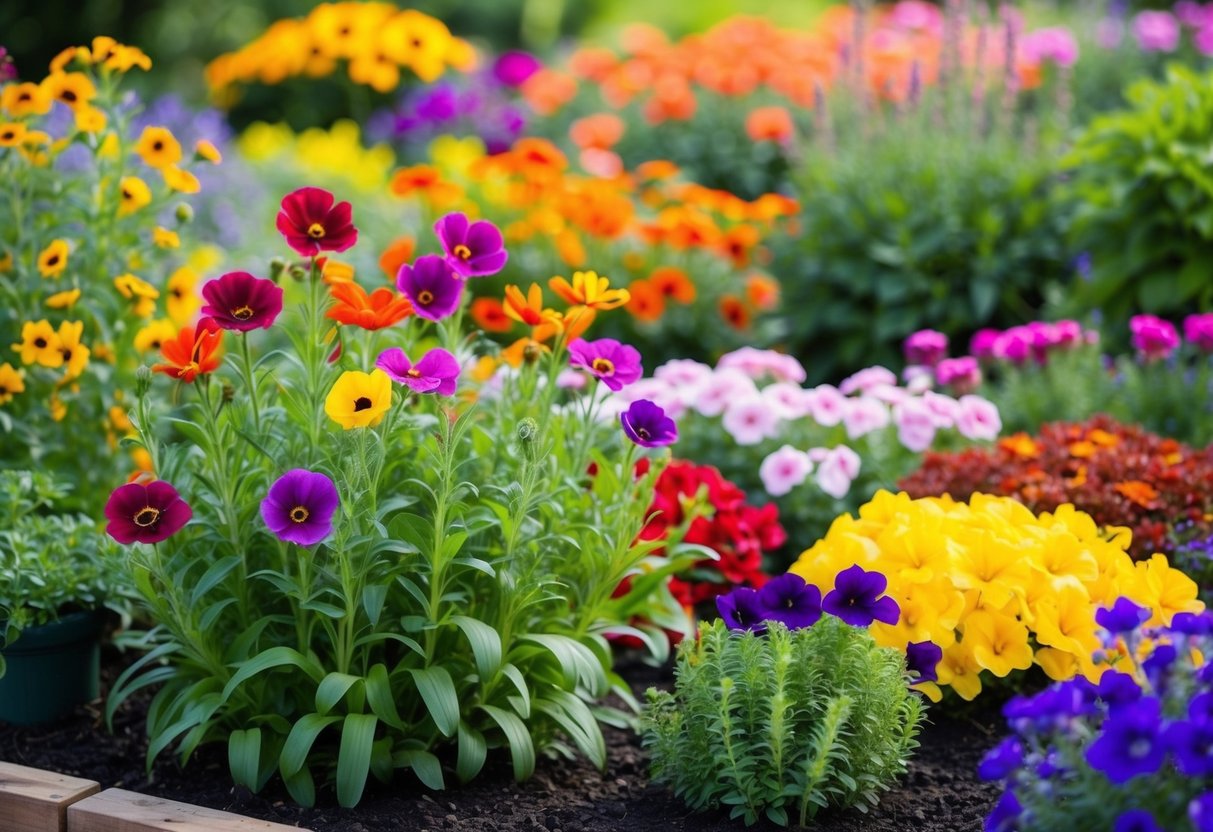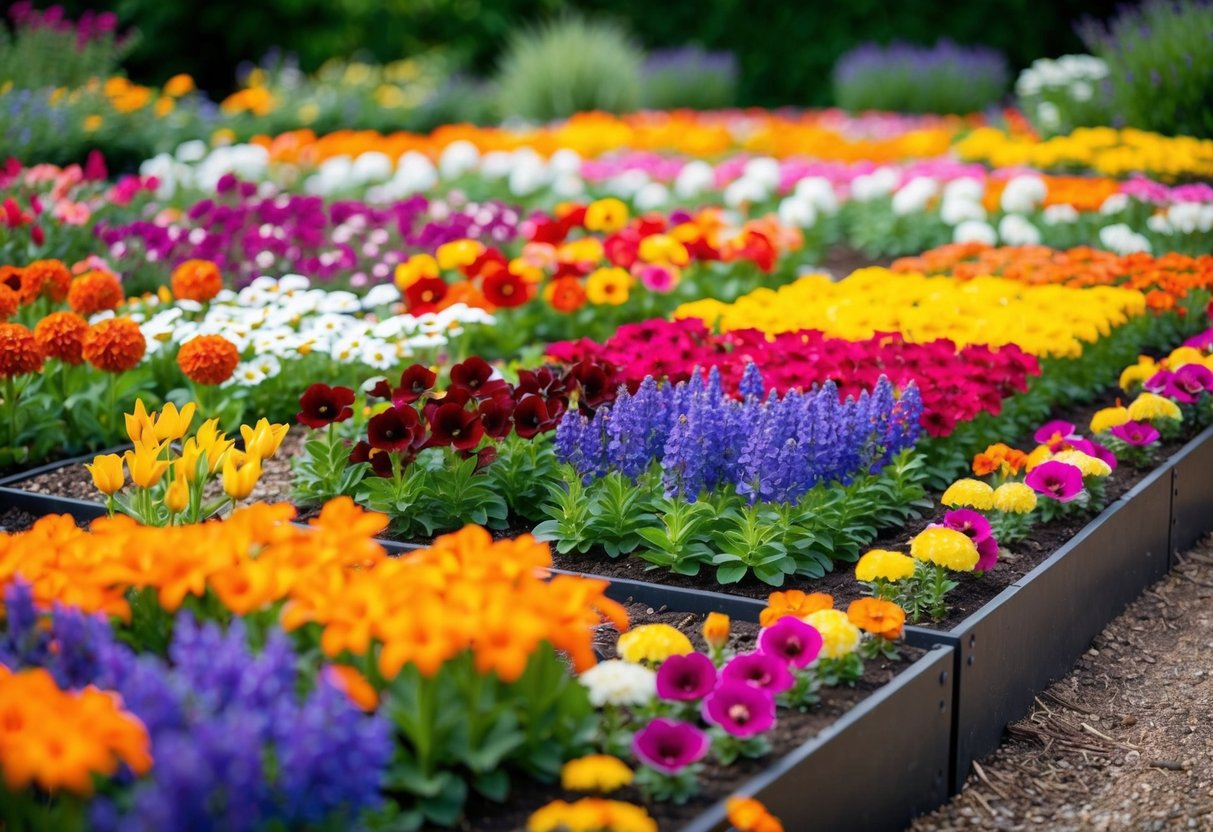What is the Most Popular Bedding Plant? A Friendly Guide to Top Choices
When it comes to sprucing up your garden, you might wonder which bedding plant stands out as the top choice. The geranium is often considered the most popular bedding plant. Known for its vibrant colors and resilience, this plant adds beauty to any garden. You can enjoy blooms from late spring to the first frost, making it a favorite for many gardeners.

Bedding plants come in various types, including annuals, perennials, and biennials. Geraniums, specifically, are a great choice because they don’t require vast amounts of water, which is ideal if you want a low-maintenance plant. You might also consider other well-loved options like Petunias and Begonias, which offer stunning colors and thrive in containers or hanging baskets.
Exploring different bedding plants can be both fun and rewarding. Whether you’re sprucing up a balcony or creating a garden oasis, the right choice can make a big difference. You’ll find that these plants not only enhance your outdoor space but also bring a sense of joy and satisfaction to your gardening efforts.
Popular Bedding Plants Overview

When choosing bedding plants, you often look for vibrant colors and easy maintenance. Summer bedding plants like petunias and geraniums are great options for brightening up your garden.
Characteristics of Bedding Plants
Bedding plants are known for their bright colors and decorative appeal. They can transform a simple garden spot into a vibrant scene. Popular choices include petunias, geraniums, and begonias. These plants flourish in containers and hanging baskets, which make them perfect if you have limited space.
Most bedding plants require regular watering, but they don’t need to be drowned. A nice, even distribution of light and water can help them thrive all summer long. You may also notice that many bedding plants provide a burst of color in the summer, making them a popular choice for adding life to your outdoor spaces.
Annuals vs. Perennials vs. Biennials
Annuals, like many summer bedding plants, are planted once a year. They grow from seed to bloom and then die in one season. Petunias and some geraniums fall into this category. They are great for a single season of color and are perfect for beginners seeking vibrant, easy-to-grow options.
Perennials, on the other hand, live for several years and can provide lasting beauty. Although less common, perennial geraniums can be a great long-term addition to any garden. Biennials, such as some types of begonias, require two years to complete their life cycle, offering you a split-second transformation as they mature.
Understanding these categories can help you pick the right plant for your gardening needs.
Caring for Your Garden’s Bedding Plants

Taking care of bedding plants involves proper watering and feeding, controlling pests, and regular maintenance through deadheading and pruning. Ensuring your plants thrive includes understanding their needs and being attentive to changes in your garden.
Watering and Feeding Techniques
Watering your bedding plants is crucial. Too much can lead to root rot, while too little may stunt growth. Aim to keep the soil consistently moist but not soggy. Early morning watering is best, allowing the leaves to dry and reducing disease risk.
Feeding is just as important. Use a balanced fertilizer every few weeks during the growing season. Rich soil enhances growth, so consider adding organic matter like compost. This improves soil structure and provides essential nutrients. Keep an eye on your plants for signs of nutrient deficiency, such as yellowing leaves, and adjust feeding accordingly.
Dealing with Pests and Insects
Keeping insects at bay is vital for healthy plants. Regularly inspect your bedding plants for signs of pest infestations. Common pests include aphids, slugs, and snails. Natural pest control can be effective; try introducing beneficial insects like ladybugs to your garden.
Consider using insecticidal soap if infestations persist. Another option is homemade remedies like a spray made from water and dish soap. Avoid chemical pesticides if possible, as they can harm beneficial insects. Proper plant spacing helps increase air circulation, reducing pest problems and disease spread.
Deadheading and Pruning
Deadheading, the process of removing spent blooms, encourages more flowers to form. Use shears to snip off faded blossoms, allowing the plant to focus its energy on new growth rather than seed production. This simple task keeps your plants looking fresh and vigorous.
Pruning also plays a key role. Trim out any dead or damaged stems periodically. This improves the plant’s appearance and promotes healthy growth. It’s best done in the early morning when temperatures are cooler. Regular maintenance through deadheading and pruning can lead to a more vibrant garden filled with lush, colorful plants.
Choosing the Right Plants for Your Space

When selecting plants for your space, consider both the aesthetic appeal and practical needs like light, water, and pollinator attraction. By understanding the strengths of each plant type, you can create a vibrant environment that thrives.
Plants for Containers and Baskets
Growing plants in containers and baskets is a great way to add greenery to patios, balconies, and window boxes. They allow you to adjust positioning to find the best light. Popular choices include petunias, geraniums, and fuchsias.
These plants are known for their bright blooms and ability to thrive in limited soil. When choosing plants for your containers, remember to consider watering needs. Hanging baskets can dry out quickly, so look for drought-tolerant varieties or ensure regular watering.
Selecting Bedding Plants for Flower Beds
Bedding plants transform flower beds with bursts of color. Consider marigolds, impatiens, and begonias for a classic cottage garden look. These plants are easy to grow and offer beautiful displays.
Make sure to plant them according to each type’s light preference; some need full sun, while others thrive in partial shade. Regular feeding with a balanced fertilizer helps maintain their vibrant blooms throughout the season.
Bedding Plants for Pollinators
If you want to attract pollinators such as bees and butterflies, choose plants that offer nectar and pollen. Lavender, salvia, and cosmos are excellent choices. These plants not only beautify your garden but also support local wildlife.
When selecting plants, think about a mix of colors and sizes to create a visually appealing space. Grouping plants together can help maximize the benefit to pollinators and increase biodiversity.
Drought-Tolerant Varieties
For areas with limited water availability, drought-tolerant plants are essential. Species like zinnias, coneflowers, and succulents require less frequent watering and are hardy under hot conditions.
These plants help maintain a lush garden look even during dry spells. By using drought-tolerant options in your garden or in containers, you can conserve water and still enjoy a vibrant space. Remember to ensure proper drainage to prevent root rot and promote healthy growth.
Understanding Growth Habit and Blooming

When choosing bedding plants, understanding their growth habit and blooming patterns is crucial. Different plants have varied flowering periods and can be either upright or cascading, influencing how you design your garden or pots.
Flowering Periods and Seasons
Bedding plants bloom at different times of the year. Summer flowers like petunias and begonias thrive during warm months, adding vibrant colors to your garden. These plants typically start blooming in late spring and continue through the summer until the first frost. Known for their dynamic colors, they can create striking displays in your garden throughout this period.
Some plants, like pansies and violas, bloom in cooler seasons, such as autumn and winter. Each plant has a distinct flowering season. Knowing when a plant blooms helps you plan for continuous color in your garden all year.
Upright versus Cascading Varieties
Plants have different growth habits, with some being upright varieties. These grow vertically and are perfect for flower beds and borders. Geraniums and snapdragons are popular choices for upright growth, providing height and structure to your plant arrangements.
On the other hand, cascading varieties, like trailing petunias, flow downwards. They’re ideal for hanging baskets or the edges of containers, creating a waterfall effect. The habit of the plant affects both its aesthetic appeal and how it fits into specific areas. By choosing the right type, you can enhance the visual interest and practicality of your garden spaces.
Innovative Uses and Arrangements

Bedding plants can be used creatively to make striking visual effects in your garden. From crafting a vivid color palette to designing landscapes or even using these plants indoors, your options are quite diverse.
Creating a Vibrant Color Palette
Start by selecting bedding plants with a variety of colors to craft a brilliant display. Consider using flowers like geraniums, petunias, or marigolds for bright reds, pinks, and yellows. Place these colorful plants in beds or containers to create striking contrast against green foliage.
Mixing colors can create depth and interest. Carpet bedding involves planting in patterns to form designs, making use of detailed designs and contrasting colors to achieve a stunning look.
Incorporating Bedding Plants in Landscape Design
Incorporating bedding plants into your landscape design can boost the visual appeal of your garden. Use them to create borders that define paths or zones within the garden. Arrange plants in layers, with taller plants at the back and shorter ones in the front.
Consider the growth habits and sunlight needs of each plant. Bedding plants work well in geometric designs or as bursts of color in specific areas. Make sure to plan for seasonal changes to maintain the blooming cycle and color coverage throughout the year.
Cut Flowers and Indoor Displays
Utilize bedding plants as cut flowers to bring color indoors. Choose blooms like zinnias or dahlias that hold up well indoors. These flowers can be placed in vases around your home to brighten up any room.
Bedding plants can also thrive in indoor pots with enough light. Try planting them in window boxes or small containers for indoor decor. Using indoor displays helps bridge the garden to your living space, offering year-round enjoyment and a constant splash of color inside your home.







